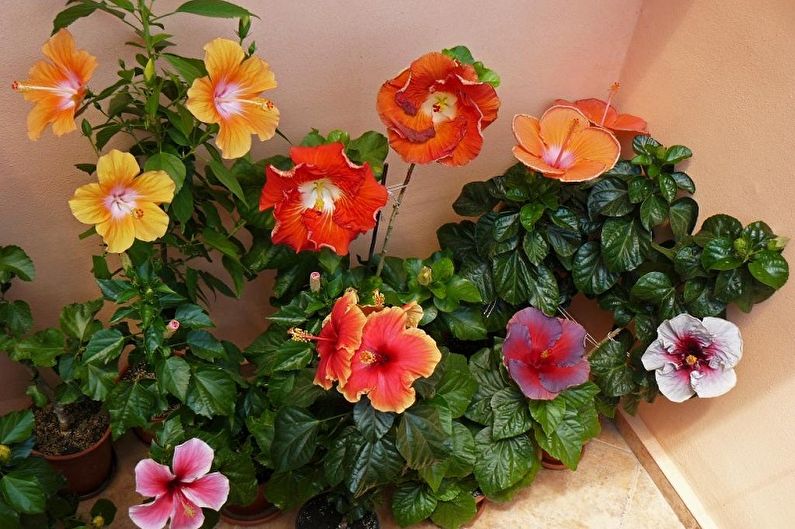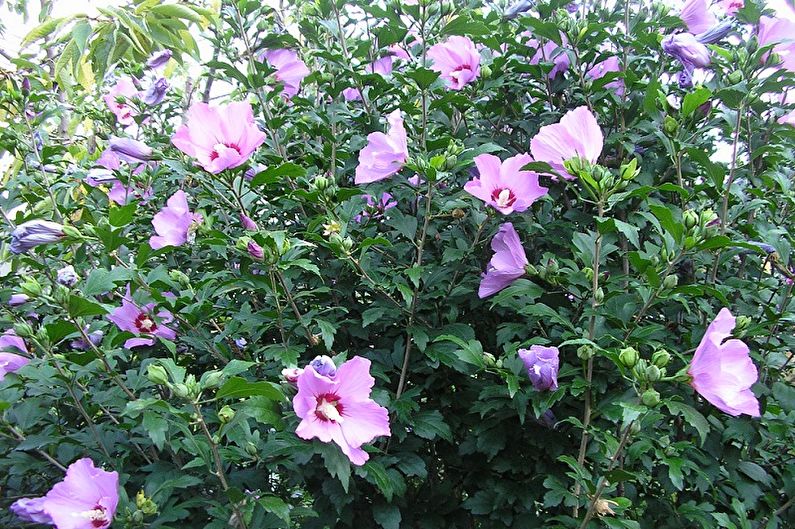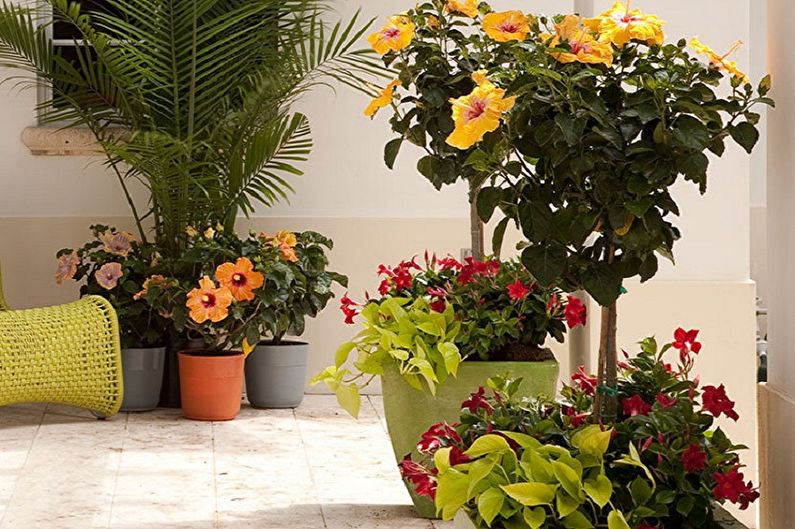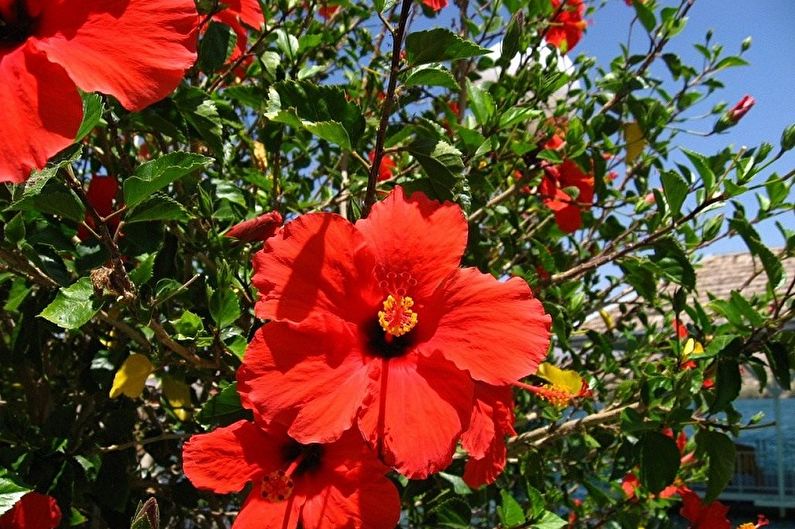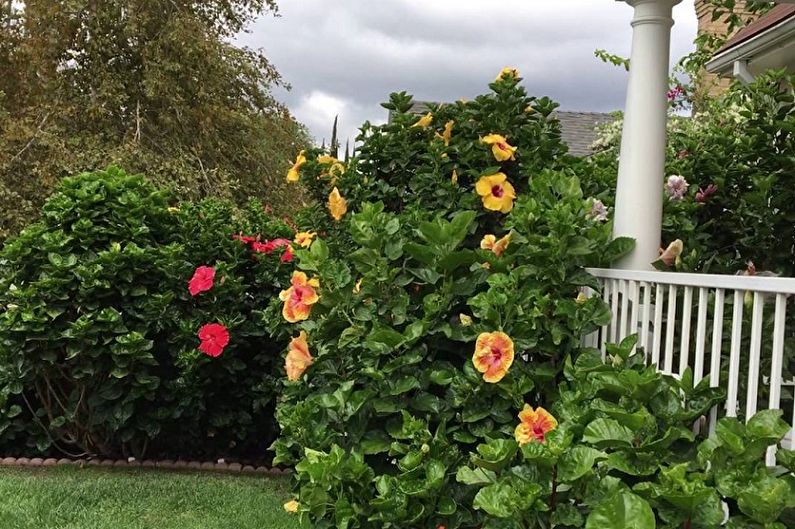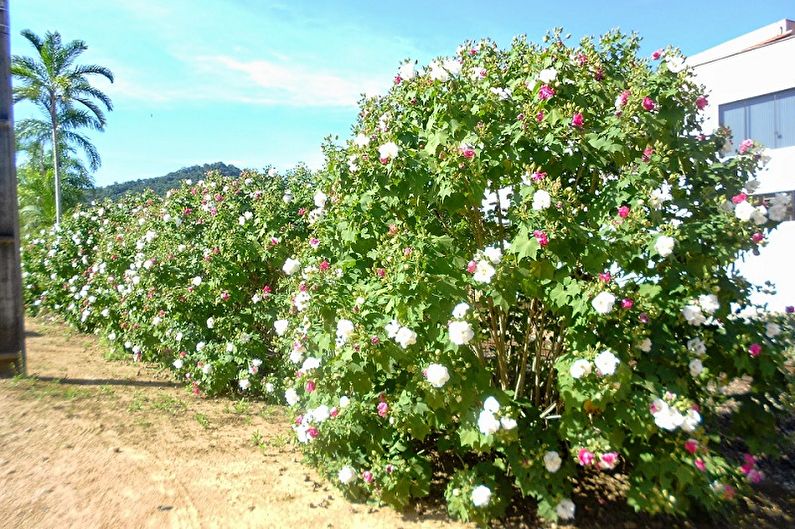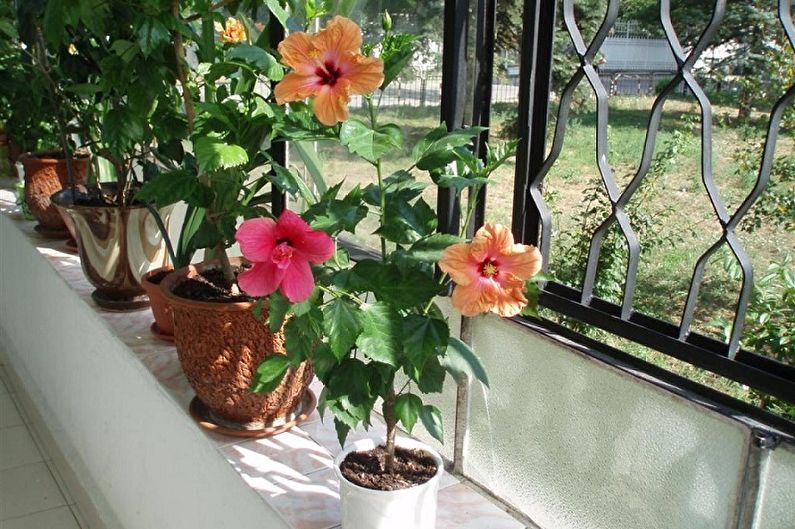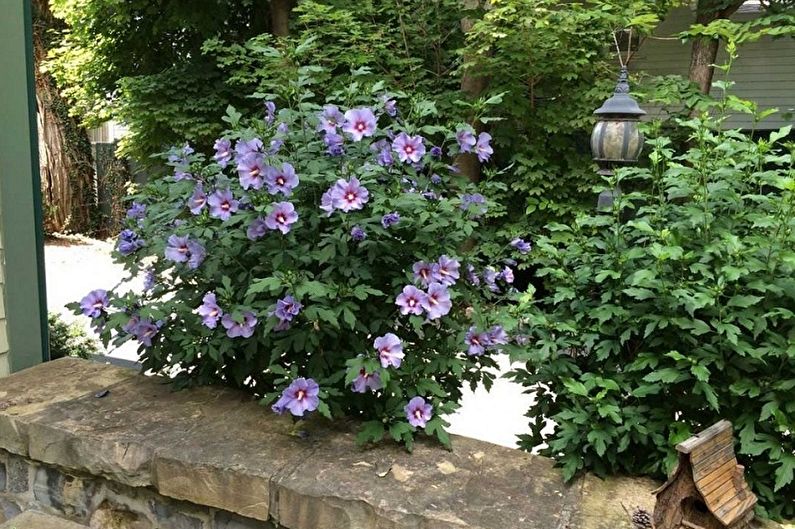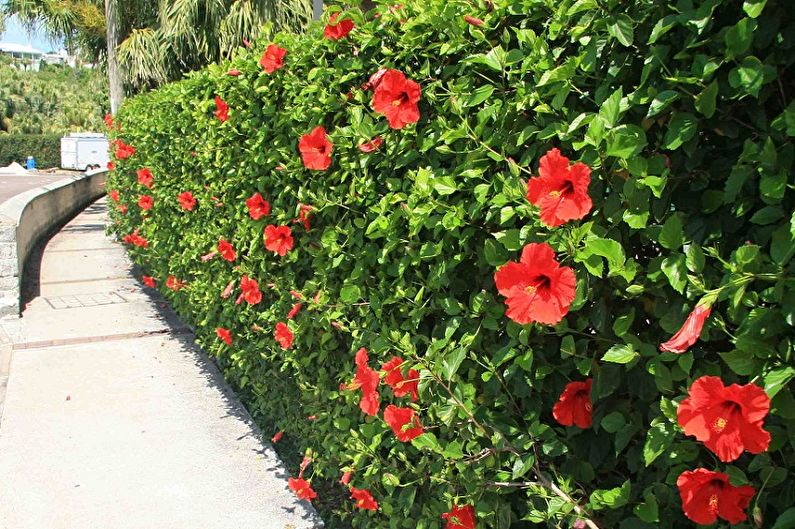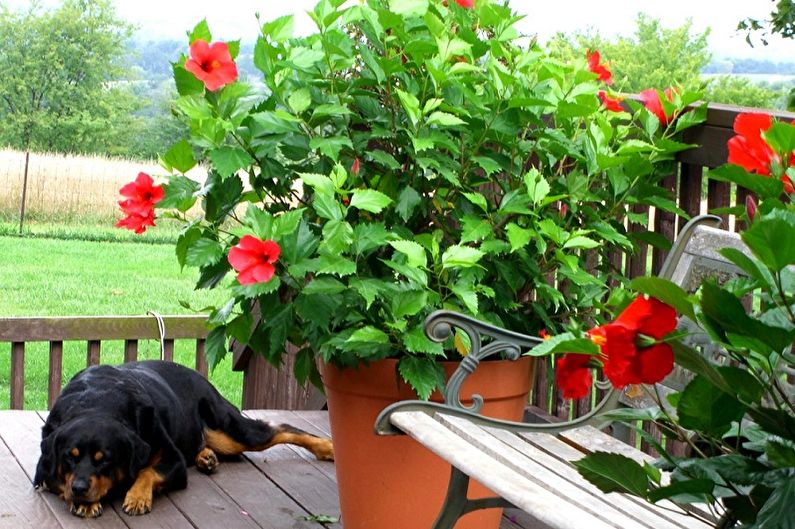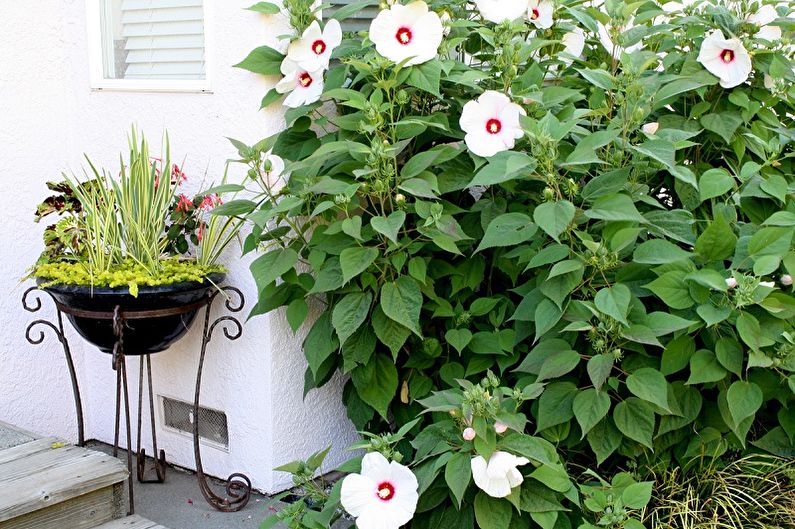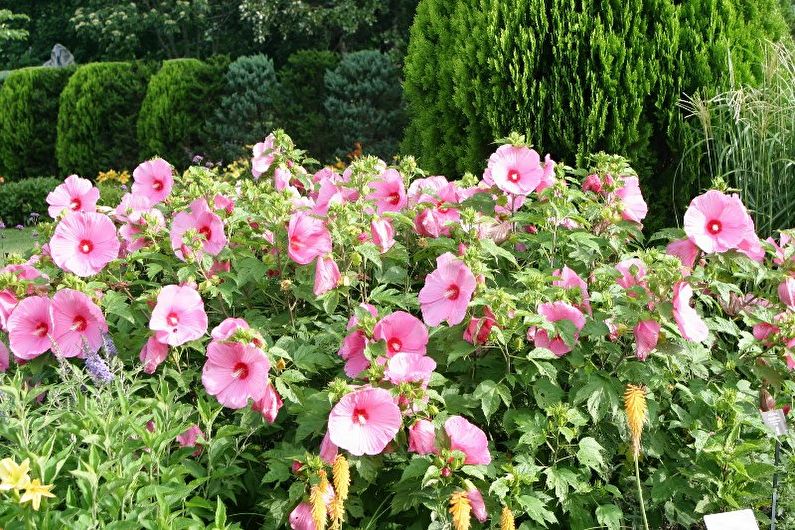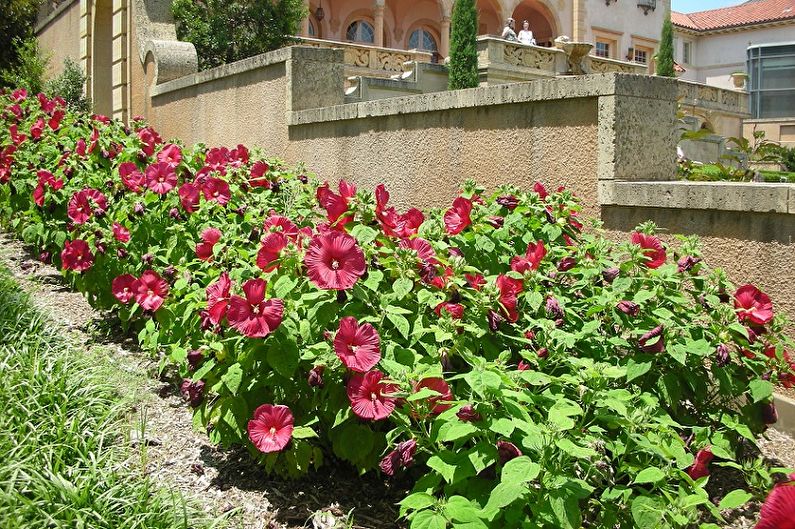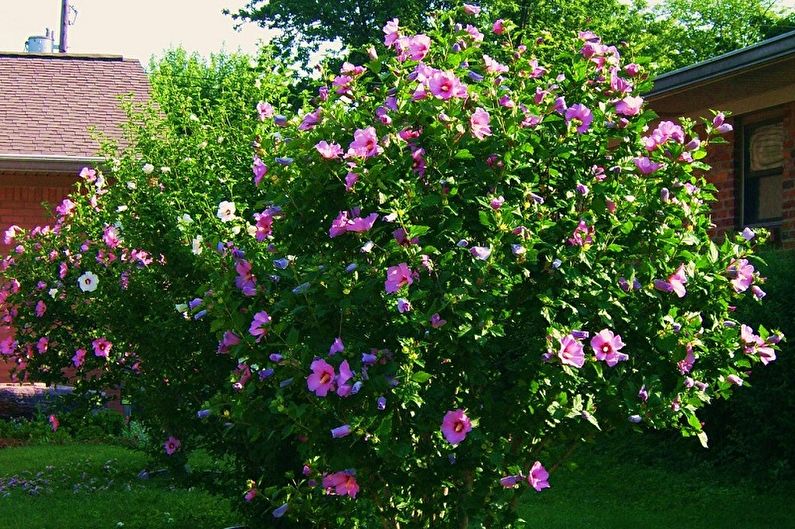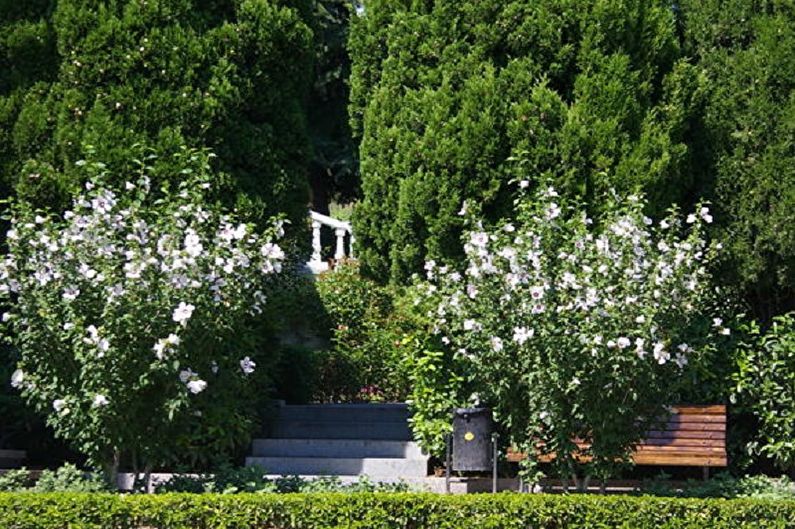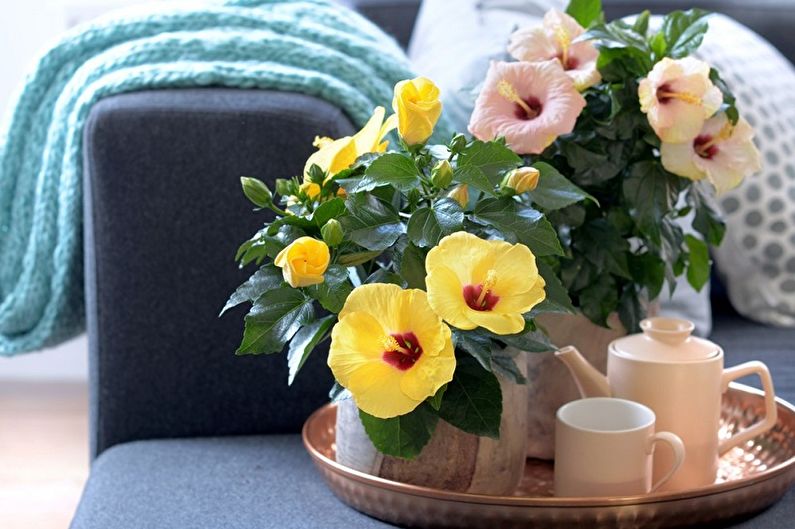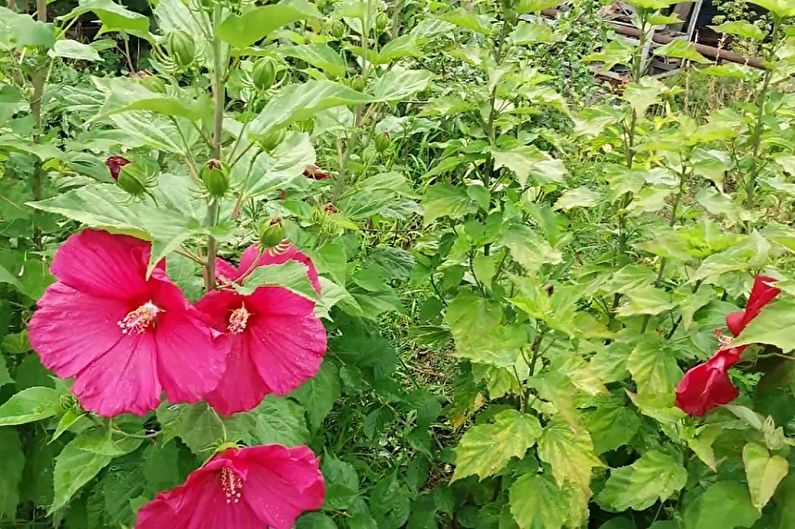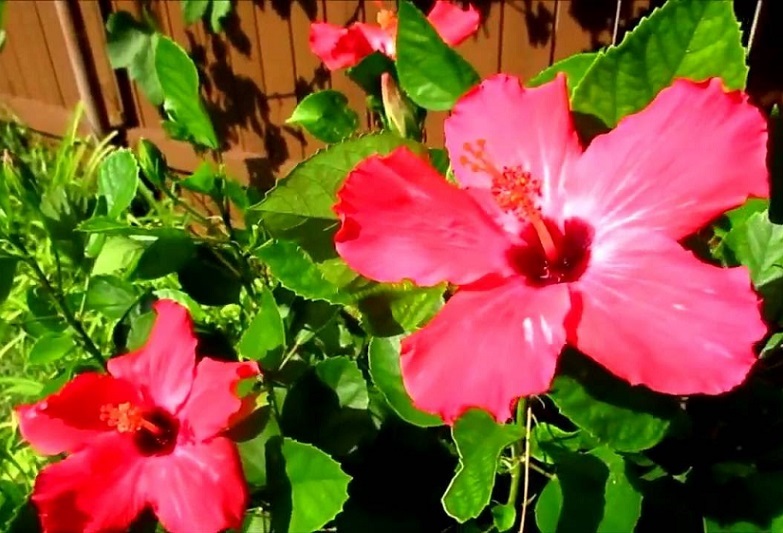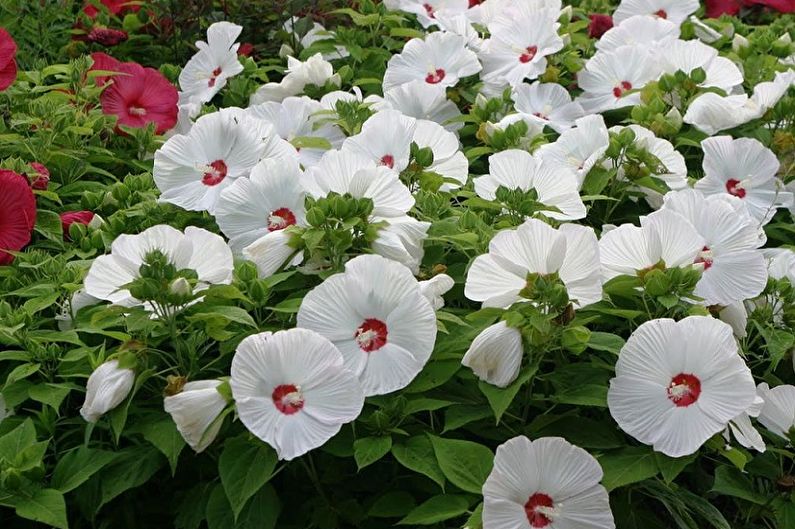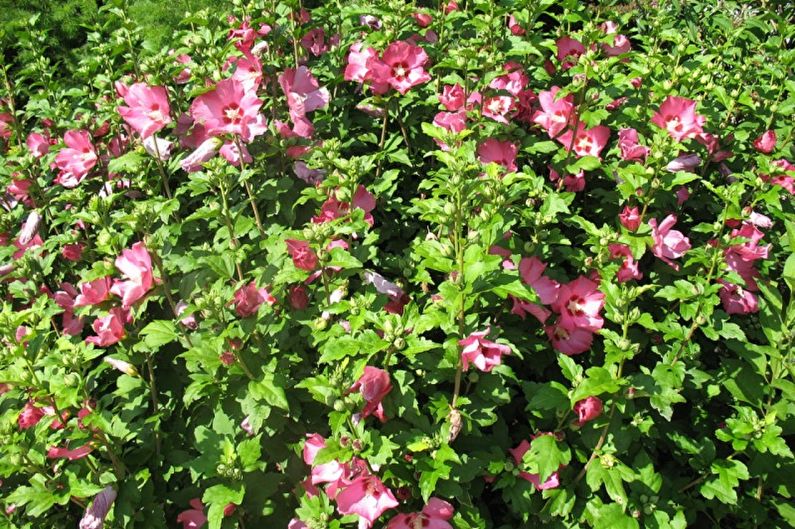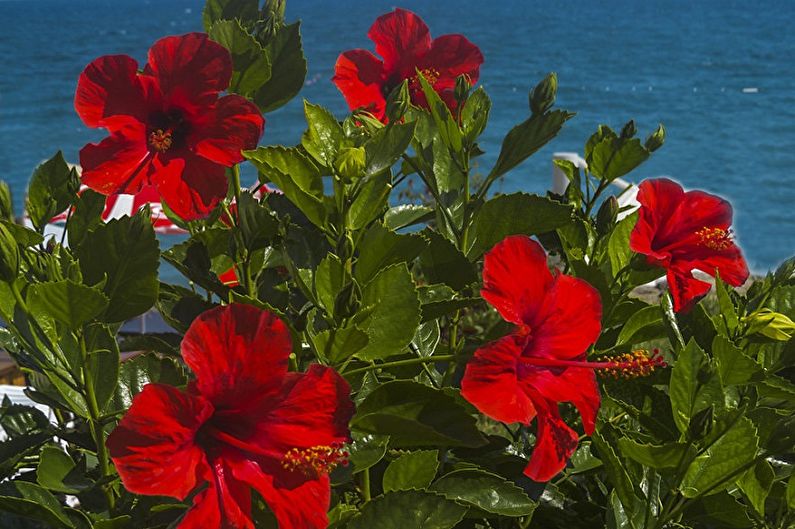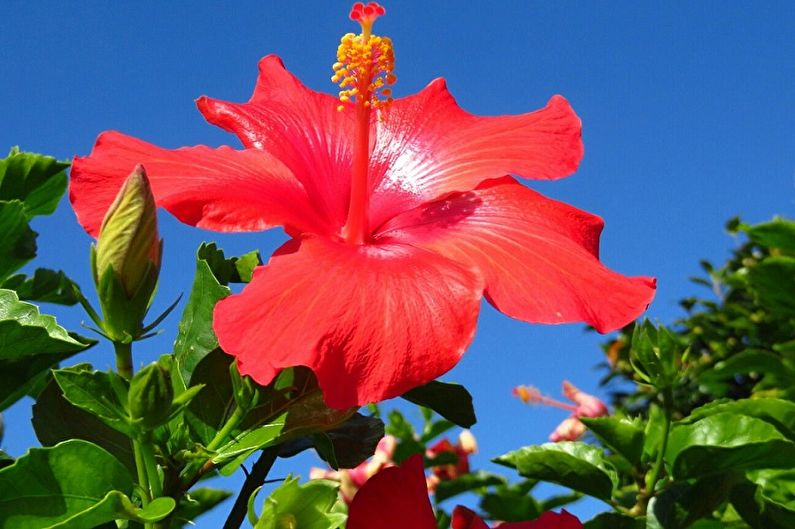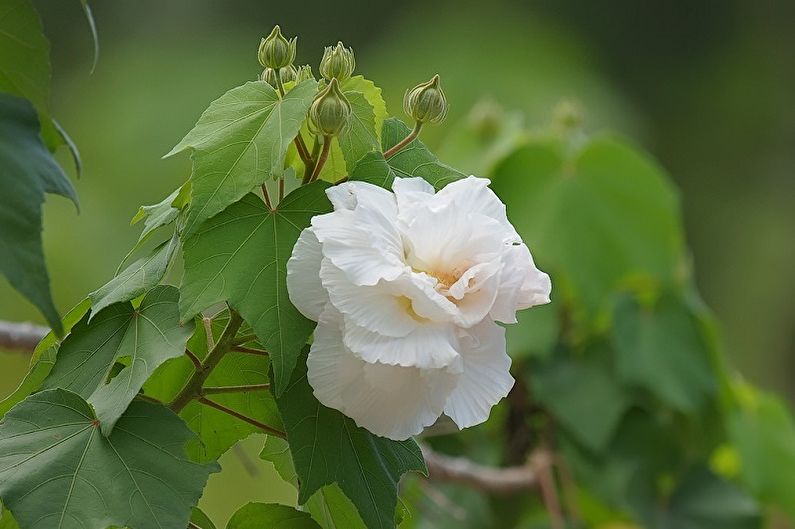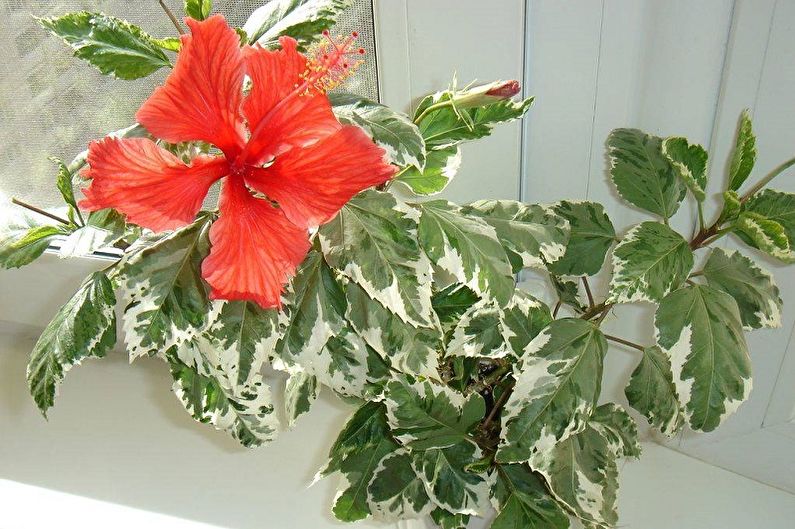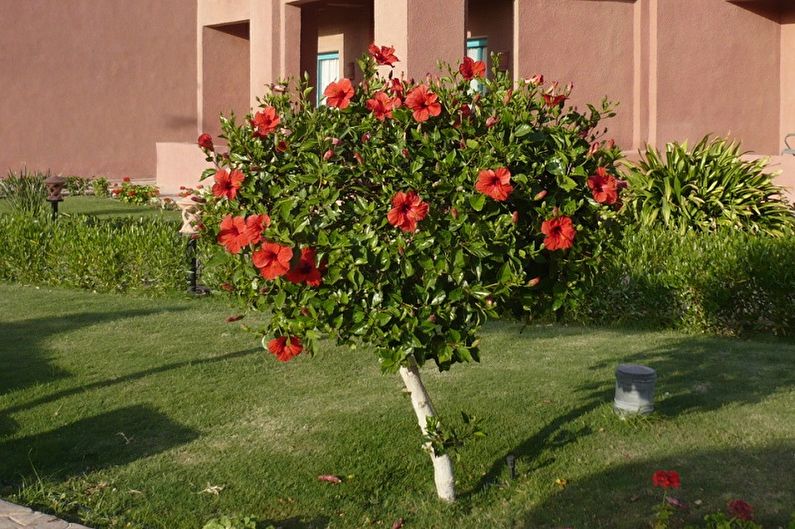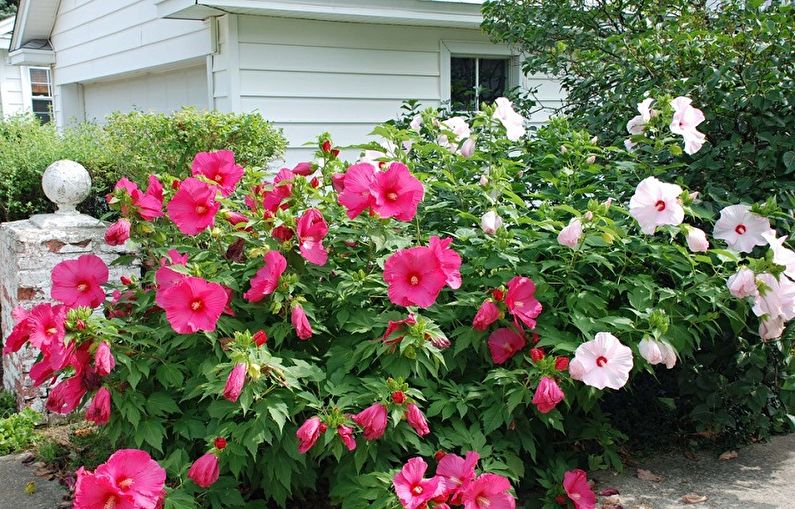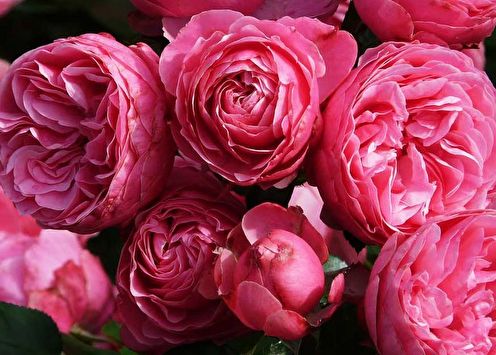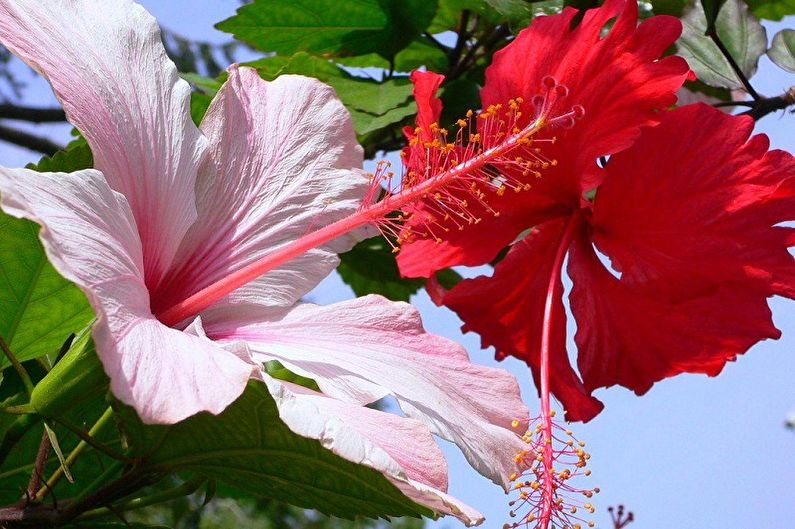
Hibiscus is native to the subtropical and tropical regions of Southeast Asia and the Pacific Islands. This charming plant has hundreds of varieties that not only please lush flowering, but are also used in the food industry, cosmetology, for example, black hair dye is made from flowers of some species. The well-known Karkade tea is the same hibiscus, and all parts of this plant are used in medicine. The culture is characterized by the ability to bloom for a long time. Some varieties (for example, Chinese rose), with proper care, can please their owners with flowering for up to 20 years.
The main types
In nature, there are about three hundred species of hibiscus, represented by evergreen herbs, shrubs and trees. For home growing, much fewer of its representatives are used, but each of them differs in the size of leaves and flowers, their color, patterning and duration of flowering. There are completely unusual representatives, whose petals are framed by a bright edging, dotted with strokes or decorated with an eye, which makes the flowering unmatched beautiful. Next, we will consider the main types of home hibiscus grown by flower growers.
Hibiscus triple
The plant reaches a height of 80 cm. Its flowers, up to 4 cm in diameter, have a pale yellow color with an original purple center. Culture pleases with its color only in the morning, and in the afternoon the buds “fall asleep”. The duration of flowering is a little more than a month, then new buds appear in the axils of the leaves.
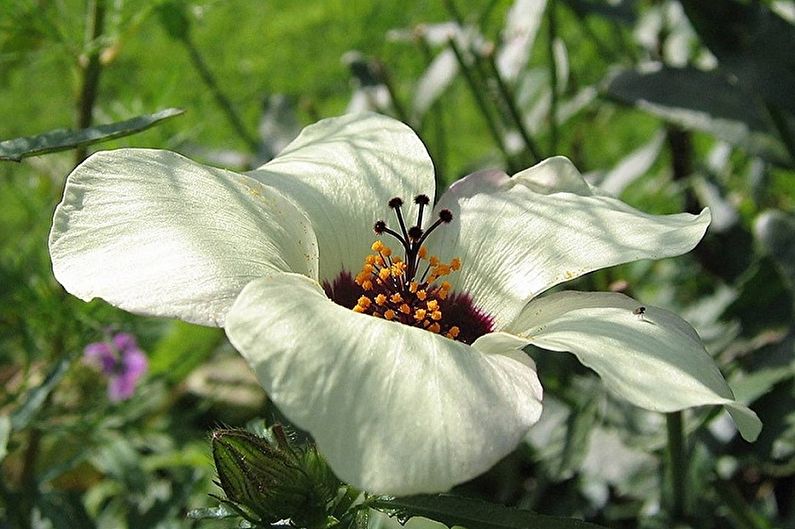
Hibiscus tree
This is a frost-resistant and unpretentious species of hibiscus, having large flowers with a diameter of up to 12 cm. Blooming buds have a bright color in various shades (depending on the variety). Although the flower lives only one day, the bush is not empty - new buds bloom on it daily. Looks great in the form of a hedge. With proper care, the bush reaches three meters in height and a half meter in width. It blooms with the onset of summer until late autumn.
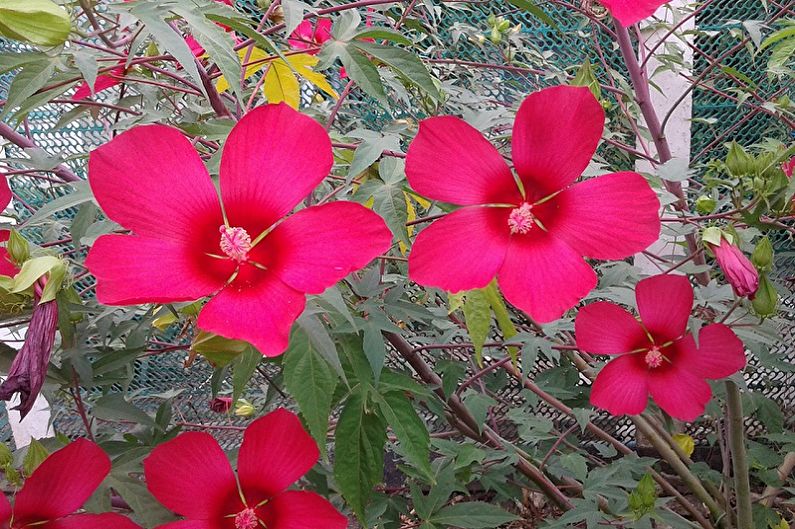
Syrian rose
An ornamental plant with a large palette of shades - from snow-white to raspberry, sometimes two-tone varieties can also be found. It has large buds that, when opened, reach 10 cm in diameter. Flowers can be simple or double. To see the flowering, you need to be patient, as the culture grows rather slowly and blooms no earlier than at the age of three, and possibly later. It is also possible to grow the plant in open ground - in areas with special climatic conditions, warm winters.
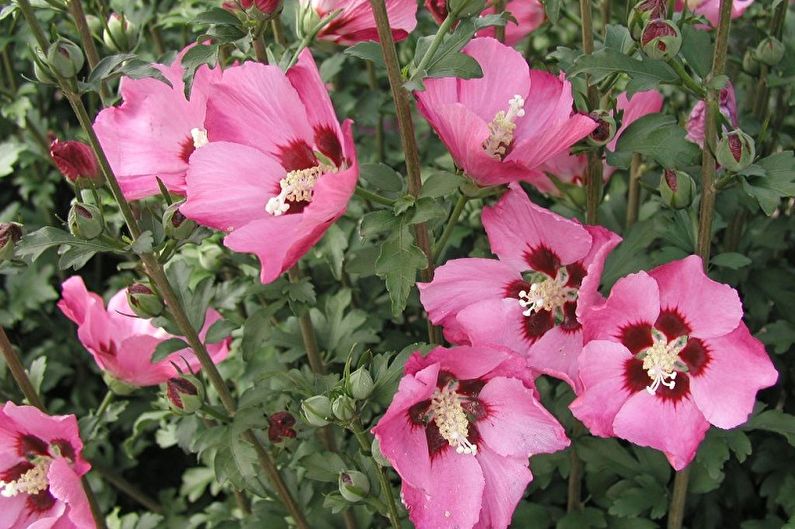
Hibiscus is mutable
This species is a deciduous shrub with an upright trunk, reaching a height of 3 m. It got its name due to the variability of the color of buds, which first have a white color, and then pink. In this case, simple or double flowers reach a diameter of 10 cm, the leaves are lobed, quite large.

Chinese rose
Representatives of this species are evergreen shrubs with long shiny leaves (up to 15 cm) and brownish bark. There are many varieties that differ from each other in size, terry colors, their color, which is represented by a white, yellow, pink, red, purple palette with many shades. Flowers bloom only for a couple of days, but from spring to autumn new specimens appear.
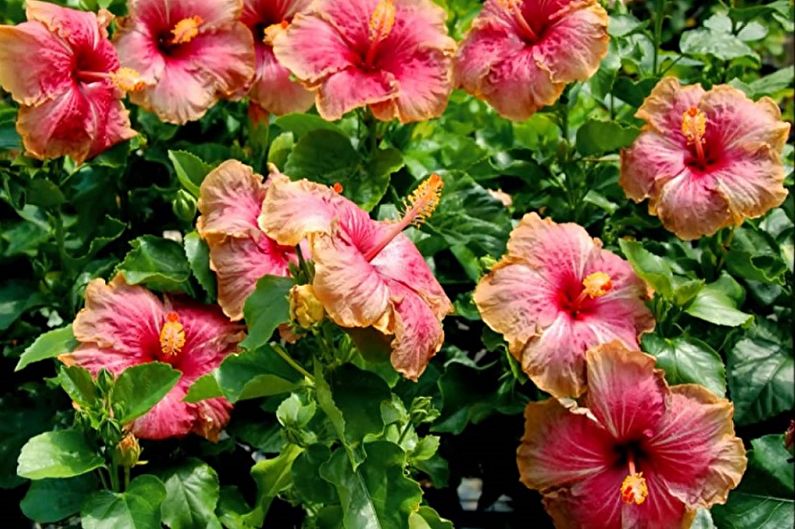
Proper Hibiscus Care
Growing hibiscus at home cannot be called a simple process. The plant requires the creation of a suitable microclimate, as well as constant feeding.Sharp fluctuations in temperature, excessive watering, lack of light and even a change in the angle of illumination are factors that can lead to the dropping of flower buds. Proper care will ensure the culture of splendor of colors and a long life.
Lighting
Hibiscus categorically does not like the incinerating sun's rays, so they give it a bright place, but protected, darkened in the afternoon from the sun. For flowerpots growing on window sills, you can make a screening of fabric or translucent paper.
In garden plots, it is planted on the south, west, east side, and the north is contraindicated. In winter, the apartment representatives lack natural light - they need a daily exposure of 8–9 hours using fluorescent lamps. In this case, the lighting device must be placed at a distance of not less than half a meter.
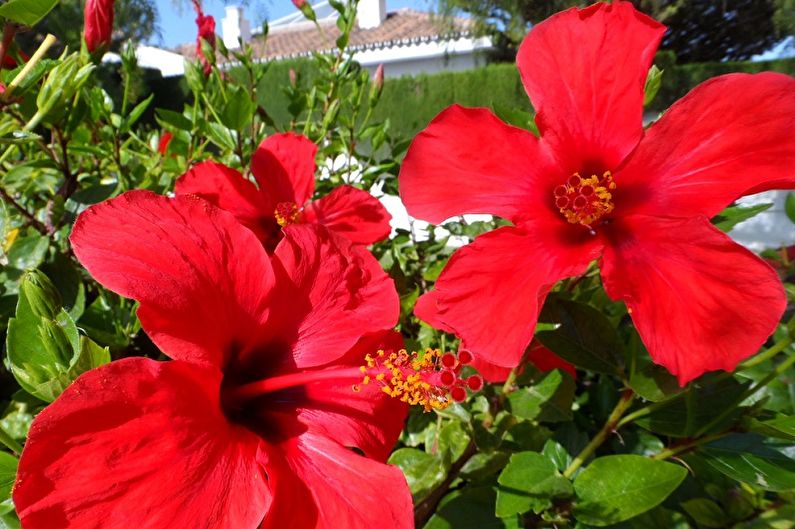
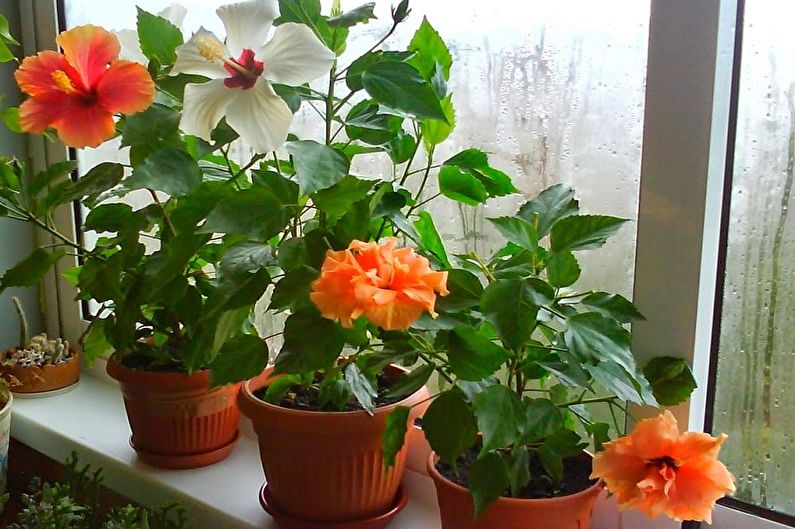
Temperature
In the spring-summer period, the most suitable temperature for the normal development of hibiscus is + 22 ... + 25C. With the beginning of autumn, it must be reduced to + 16C, and in the winter to + 14C, which will positively affect its decorativeness, as well as the best quality of flower buds. A lower temperature will cause foliage to drop. During the flowering period, it is possible to provide the flower with a higher temperature, reaching + 30C.

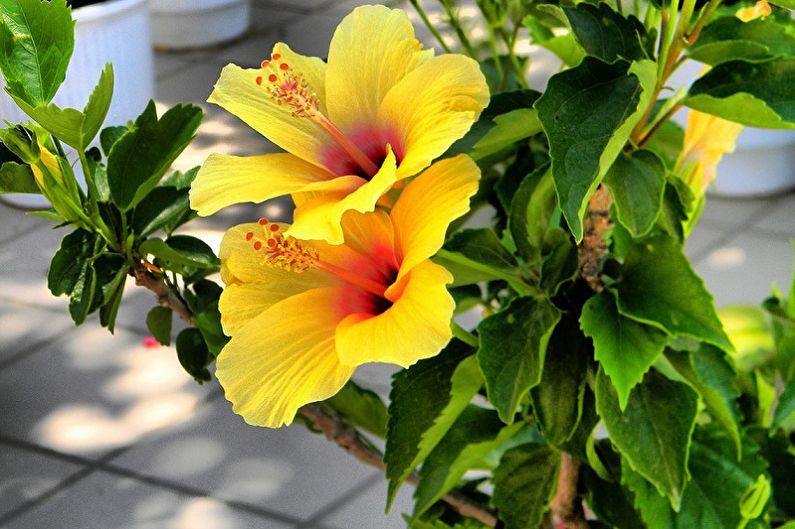
Humidity
Hibiscus feels best with high humidity, which contributes to lush and long flowering. Spraying in the summer is an important component of proper care. The procedure is performed twice a day - in the morning and in the evening. In the spring and autumn, they are sprayed once every two days.
It is also necessary to take care of the apartment representatives. In the winter period, when the heating season begins and the temperature in the room can reach + 20С, it is often necessary to spray its leaves. Being in over-dried conditions, the leaves of the plant lose their shape, wrinkle. Hibiscus does not tolerate stagnation of water, therefore, planting it in a pot, you need to organize good drainage, a layer of 1.5–2 cm. If water remains in the pan after watering the flower, it must be poured out.
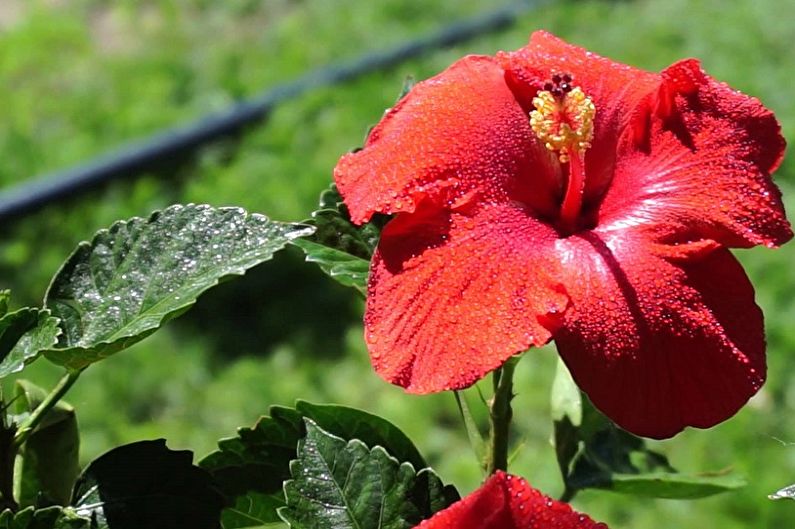
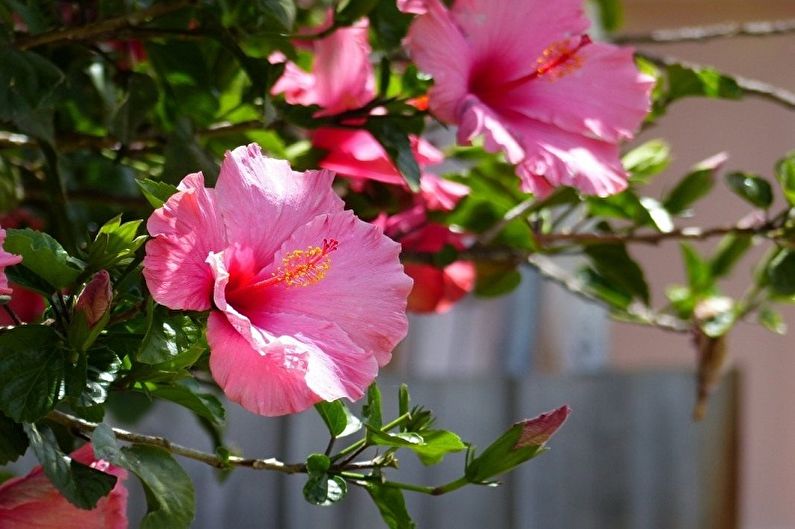
Watering
Hibiscus loves moist soil, so in the summer it is watered abundantly 2-3 times a week, since overdried areas can cause wilting and dropping of leaves. Overmoistening can also have unpleasant consequences in the form of the formation of a fungus on the roots, which can lead to death. In winter, when it is much cooler, home hibiscus is watered less often. It is better to use settled water, since irrigation with tap water containing chlorine can lead to yellowing of the leaves.
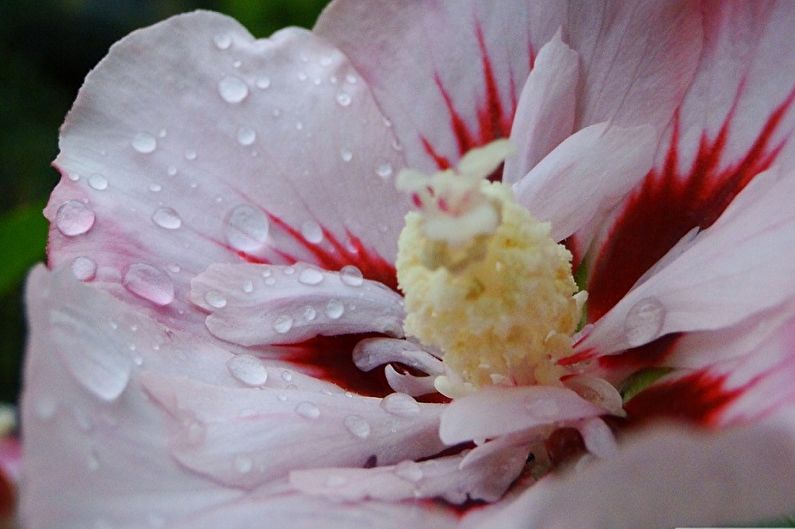
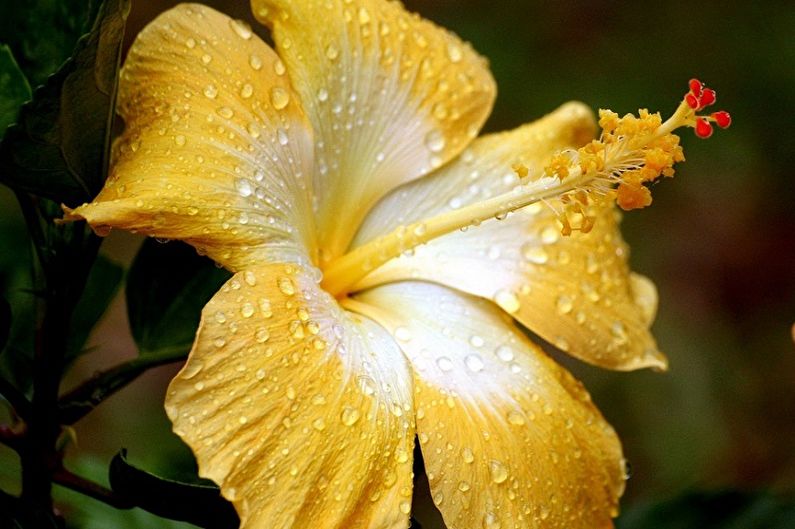
Fertilizers and fertilizing
All species of this plant need saturated nutrient soil, regular fertilizing with complex fertilizers, especially in the spring-summer period (in winter you can not feed at all). Additional meals are held once every one to two weeks. You can alternate mineral fertilizers with organic, using, for example, a solution of mullein, which is diluted in water in a ratio of 1:10.
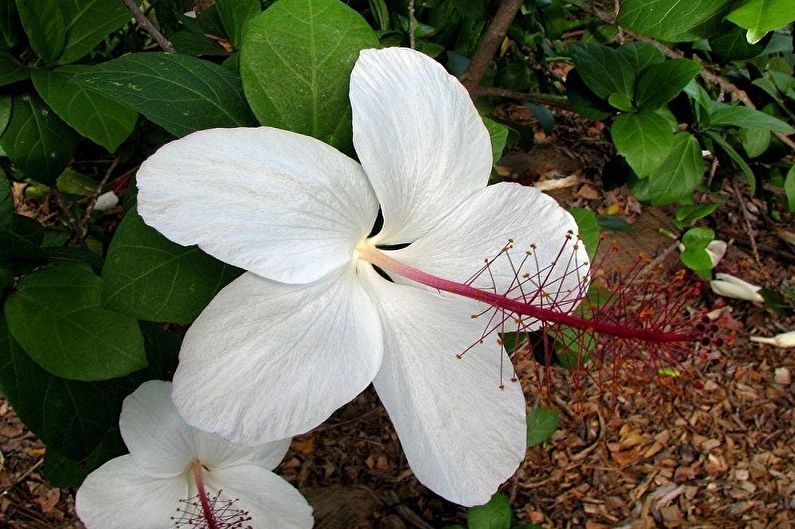
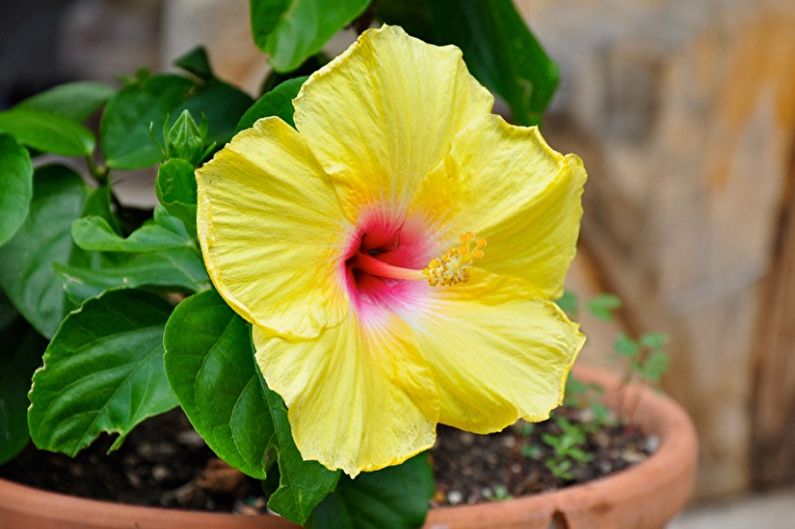
Pests and diseases
The main diseases that cause great damage to hibiscus include:
- Non-infectious chlorosis caused by a lack of essential nutrients (potassium, iron, magnesium, etc.). It can be manifested by the absence of flowering, yellowing and falling leaves. In this case, regular fertilizing with fertilizers helps;
- Infectious chlorosis - a defeat by fungi and microbes, which leads to general weakness of the plant. It must be washed in the shower, covering the soil with a bag, to create quarantine conditions;
- A sunburn, which results in white spots on the leaves;
- Vascular wilting leading to death. It occurs due to infection with fungi, the development of Fusarium disease. It is quite difficult to cure the disease. All dried areas must be removed, treated with hibiscus antifungal drug ("Desavid", "Epin").
Among the pests, the aphids and spider mites are the most dangerous. Aphid is a small sedentary insect, up to 5 mm in size, which sucks the juice from the plant, which leaves the leaves covered with yellow spots and wrinkled.
The spider mite has an even smaller size - up to 0.3 mm - and is not visible to the naked eye. On hibiscus, its colonies settle on the lower sides of the foliage, having the appearance of dust. The leaves are covered with a thin web and fall off. As a preventive measure, it is necessary to regularly ventilate the room, spray the culture. When the plant became ill, it can be treated with Actellik's solution (15 drops of concentrate per 1 liter of water). Processing must be repeated after two weeks.
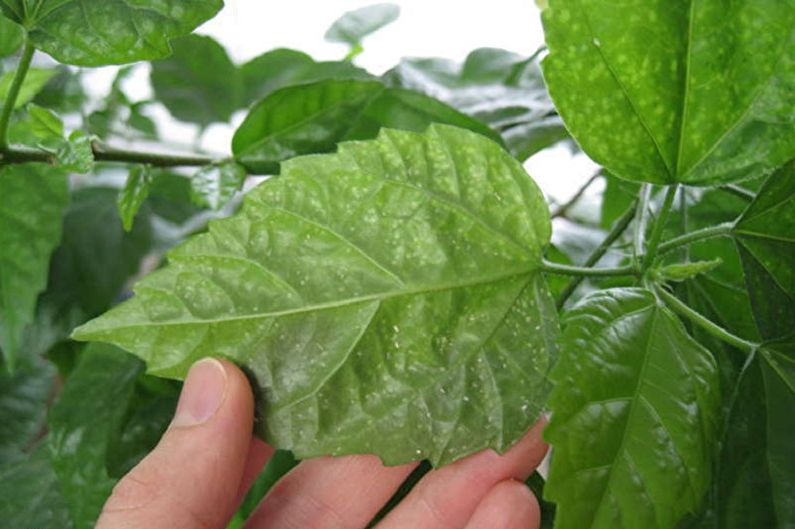
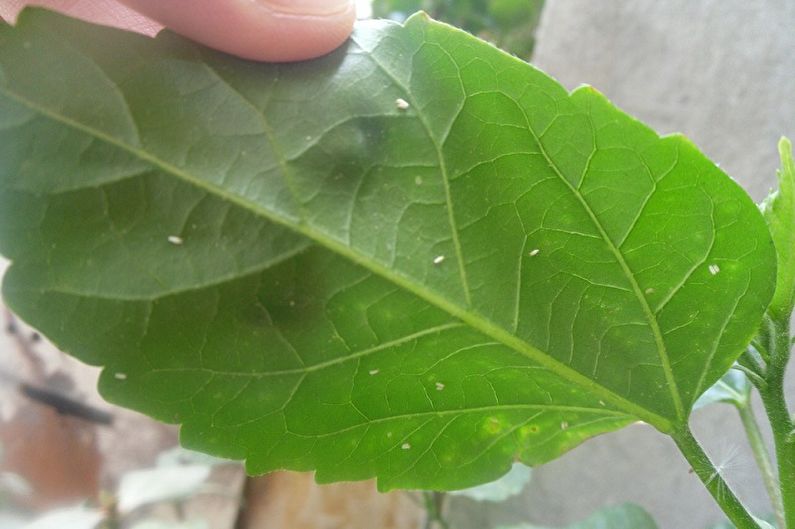
How to transplant hibiscus
Young plants are transplanted annually, and adults - as needed. You can carry out the procedure at any time of the year. The soil for transplanting must additionally contain sand and humus. Drainage, for example, expanded clay, is necessarily laid at the bottom. Hibiscus branches must be cut to a third of the length - this will accelerate the growth of young shoots. To give the necessary decorative shape, it is also trimmed. After transplanting, the culture needs a plentiful drink.

Propagation at home
To increase the number of hibiscus at home, use two main methods - seed and cuttings. With the help of seeds, breeders propagate the culture - for lovers this method is quite laborious, and flowering can be seen only after a couple of years. Hybrid hibiscus can be planted by dividing the mother bush.
Hibiscus seed propagation
If you still decide to grow a plant from seeds, this should be carried out from mid-winter to March. Immediately prior to disembarkation, the material is soaked in a dark pink solution of potassium permanganate for half an hour, and then another day in an epin solution.
This is followed by sowing in a container, which is pre-filled with favorable soil with a mixture of sand and peat. The bed is covered with glass or film, creating a kind of greenhouse, and put in a warm place (optimal temperature + 25C). You can also equip the bottom heating. The greenhouse must be regularly ventilated, condensate removed and the soil moistened.
With the advent of the first full-fledged leaves, hibiscus can be transplanted into separate containers. If the sprouts are very stretched - it means that they lack lighting, you need to organize illumination.
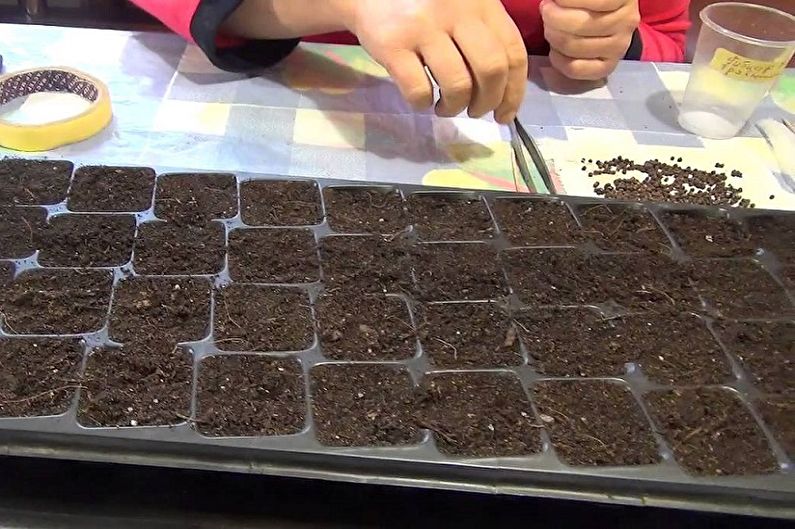

Hibiscus propagation by cuttings
This method involves the separation of cuttings from the plant with several internodes. The process is carried out in the summer. The collected material (lower sections) can be further treated with a growth stimulator. Cuttings are planted in greenhouses with peat substrate. Within a month, they take root, after which you can start transplanting into separate pots. The soil should consist of sheet and turf land, sand, peat, taken in equal proportions. At this stage, regular watering is necessary. When the shoots get stronger and grow, they can be transplanted, if necessary, into the open ground. The first flowering will come in the first year.
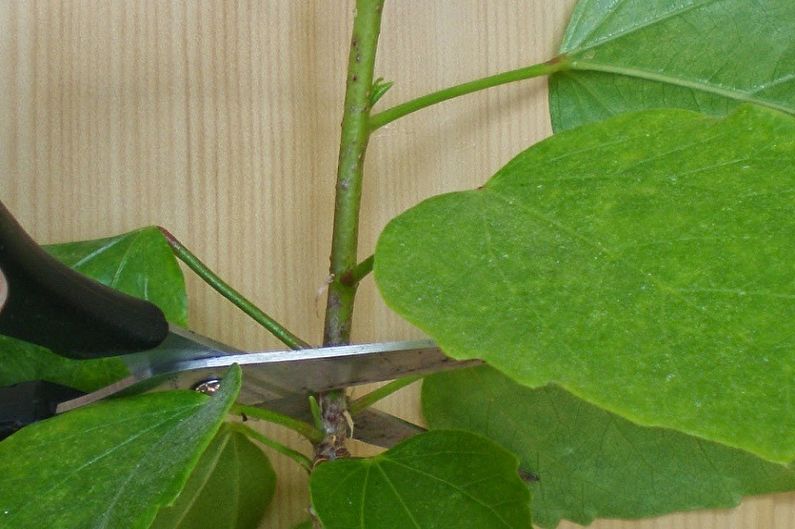
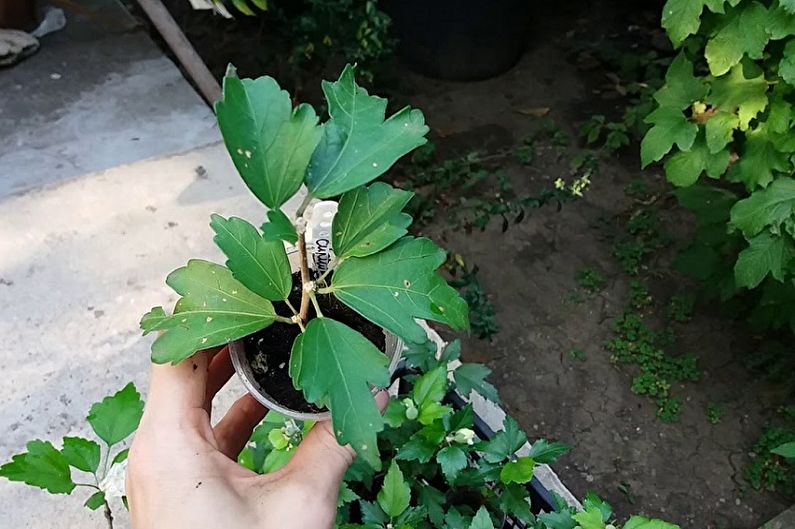
Hibiscus - photo
We suggest you look at a selection of photographs of various types and varieties of hibiscus in order to truly appreciate all its beauty and sophistication. Here are presented both garden crops and the most popular home specimens. Enjoy watching!
